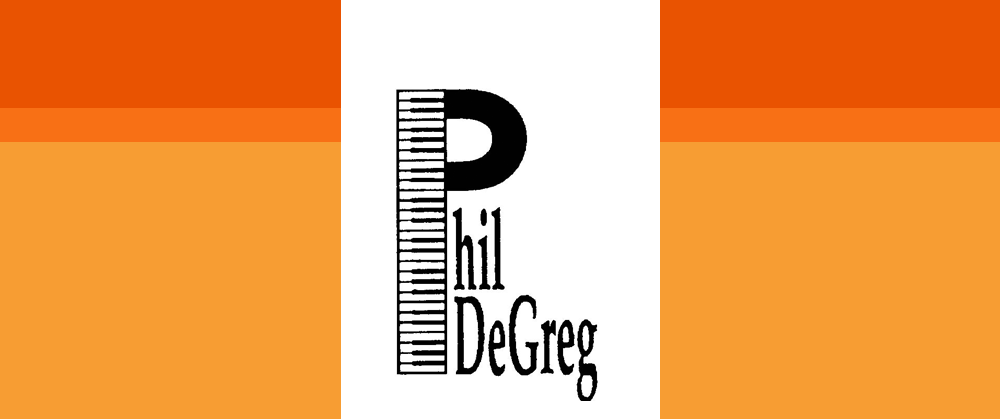Scale Study
Scales horizontally paint the color of a vertical harmony. They consist of the basic chord tones and extensions of a chord, along with passing notes. Learn them in the right hand alone at least two octaves ascending and descending (I recommend two octaves and a third ascending and descending), and with lots of repetition to solidify the fingerings. Then add a left-hand voicing, preferably a 4-note rootless voicing, and continue so you associate the scale with the left-hand sound (they share the same notes). As you learn tunes, it is good for your hearing to be able to color each harmonic change of a tune with a scale sound.
Scale Syllabus (Download PDF)
This is my catalog of the commonly used scales in jazz, along with the chordal extensions they highlight. I suggest learning them at first as you need them in tunes you are studying, and always with a left-hand chord and at least two octaves. Ultimately, you want to learn them all in twelve keys, starting with the major and melodic minor scales.
Scale Derivations (Download PDF)
The good news is that most of the scales listed in the Scale Syllabus are modes derived from a “parent” major and melodic minor scale, as shown on this chart. That means that the fingering groupings will apply to all the modes of the parent scale.
Minor and Dominant Scale Choice Comparisons (Download PDF)
In the Scale Syllabus there are 5 Minor and 6 Dominant scales listed. This chart compares them.
Scale Fingerings for Modes of Major, Melodic Minor, and Harmonic Minor (Download PDF)
Scale fingering can be highly personal, but this chart can give you a place to start. Just cross reference the scale mode with the key, and try the fingering listed at the bottom.
All Mode Scale Study (Download PDF)
Since the majority of the modes are derived from the major and melodic minor scales, this exercise will help you play them all. Play in all twelve keys and keep a completely consistent fingering throughout. It also can be expanded to two octaves.
Scale Shapes (Download PDF)
Scales become musical when you can manipulate shapes through a tune, hearing the changing the scale sound as the harmony changes. Here are various ways to practice a given scale, so you really get to know all the notes and intervals. It is modeled on the C major scale, but these shapes can be practiced with any scale or mode. Settle on your own fingerings
Scale Ear Training MP3s (Download MP3s)
Here are some audio files of completely random chord sounds for you to listen to and respond with scales that matche them. Try them on your instrument or just singing.
Bebop scales (Download PDF)
These are eight note scales that are adaptations of three commonly played seven note scales: the mixolydian (dominant), 5th mode of the harmonic minor (altered), and major scales. The inserted chromatic tone in each allows the chord tones of the scale to consistently fall on the beat over multiple octaves, which helps gives a line strong harmonic clarity. Practice them for speed and consistency, descending from the root, 3rd, 5th, and 7th of the scale. This will increase fluidity of your lines, and help your ears to hear harmonic resolution in lines. You can play II-V in your left hand with the bebop scale, and iimi7(b5)-V7b9 with the altered bebop scale.
Suggested Fingerings for Bebop, Diminished, and Whole Tone Scales (Download PDF)
These fingerings are merely suggestions; you find what works best for you. I tend to favor groupings of four fingers, since the scales contain eight notes, requiring only one thumb crossing per octave.
Bebop Scale Application to a Tune (Download PDF)
Having control of the bebop and altered bebop scales will allow you to paint the sound of any tune that uses functional harmony. Here is an example applied to the standard “Like Someone in Love”
Dorian/Altered Exercise (Download PDF)
This can help you hear the color changing from II chord to V altered chord in an ascending and descending line. You can pick different starting notes; lots of repetition will solidify a fingering. Use 4-note rootless voicings in the left hand. Excellent for the ears.
Locrian #2/Altered Exercise (Download PDF)
The same as above but using the Locrian #2 scale for a iimi7(b5) with the altered dominant sound.
Pentatonic Scales (Download PDF)
Pentatonic Scales are simply 5 note subsets of a larger 7 or 8 note scales, used throughout the history of jazz piano. This page details two commonly used pentatonic structures and the chords to which they can apply. You can finger them linearly in multiple octaves with finger groupings of 2 and 3 fingers: e.g. 1-2-3-1-3 or 1-3-1-2-3
Pentatonic Scales II (Download PDF)
A simplified look at 5 pentatonic scales and their applications
Pentatonic Patterns over II-V-I progression (Download PDF)
Here is a practical application of the use of pentatonic scales. You can make your own exercised. Use with left-hand voicings.

